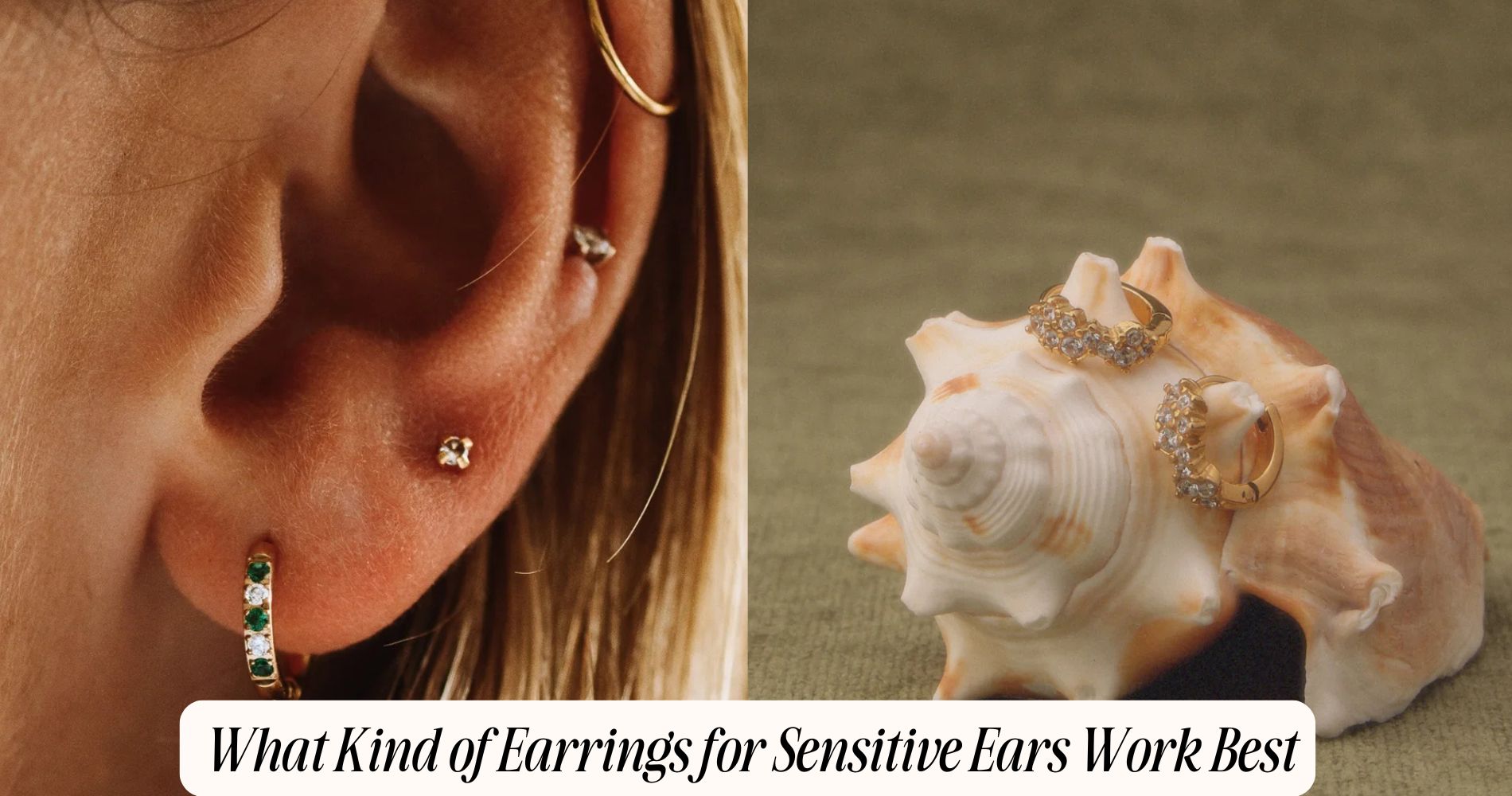
What Kind of Earrings for Sensitive Ears Work Best
Wondering what kind of earrings for sensitive ears work best? Choose implant-grade titanium (ASTM F136) or niobium posts and backs—they release virtually no nickel and are well-tolerated by most skin types. High-purity platinum or 18k–24k gold are also great options if free of base-metal alloys. Avoid vague “hypoallergenic” labels, plated jewelry, and non-implant stainless steel. Instead, opt for smooth, polished, low-profile styles like flat-back studs, huggies, or hypoallergenic hoop earrings to reduce friction and moisture buildup. Always clean them with 70% isopropyl alcohol or saline, and stop wearing them at the first sign of irritation.
Signs Your Ears Are Reacting and Why It Happens
How can you tell your ears are reacting to your earrings? Look for rapid-onset redness, burning, or itching within minutes to hours of wear.
Swelling, warmth, and pinpoint tenderness suggest acute inflammation. Clear serous drainage that crusts yellow is common with ear irritation; purulent discharge, escalating pain, or fever warrants medical evaluation.
Eczematous scaling, fissures, or lichenification imply chronic exposure. If symptoms localize to the piercing tract and resolve after removal, contact dermatitis is likely.
Allergic reactions occur when skin immune cells recognize metal ions as haptens, triggering a type IV hypersensitivity cascade (T-cell mediated).
Irritation without allergy stems from friction, pressure, or contaminants (soap, hair products) disrupting the skin barrier. Prolonged moisture, tight backings, and unclean posts increase microbial load and amplify inflammation.
Metals That Are Safest for Sensitive Ears
For sensitive ears, choose inert, high-purity metals that release minimal nickel ions. You’ll lower the risk of contact dermatitis by selecting alloys with tightly bound elements and verified composition.
Prioritize titanium (implant grade Ti-6Al-4V ELI) and niobium; both form stable oxide layers and are well tolerated. Platinum and 18k–24k gold (prefer 18k+; avoid mixed alloys) are reliable when free of base-metal contaminants. Look for certified nickel free options.
Surgical steel can be safe if it’s implant-grade (ASTM F138/F139 or ISO 5832-1). Avoid 200/400-series and unknown “stainless” jewelry, which may leach nickel.
If you’re highly reactive, stick to solid titanium or niobium posts and backs. Verify polishing quality and smooth finishes; micro-scratches increase ion release and irritation.
What “Hypoallergenic” Really Means
Although it sounds clinical, “hypoallergenic” isn’t a regulated medical standard for earrings—it’s a marketing term that only implies a lower likelihood of causing a reaction. You shouldn’t assume safety without verifying composition.
Nickel is the dominant allergen; even trace release can trigger dermatitis. Prioritize explicit alloy disclosures and standards rather than vague labels.
Look for earring classifications supported by testing: ASTM F138/F139 implant-grade stainless steel with low nickel release; ASTM F136 or ISO 5832-3 titanium; niobium; and high-purity precious metals (≥14k palladium white gold, 18k yellow gold, or platinum).
Coatings don’t fix reactive cores if they wear. Demand documentation on hypoallergenic materials, including nickel-release compliance (EN 1811) and absence of cobalt.
If you’ve reacted before, select inert, unplated metals and avoid mixed-alloy posts.
Styles and Backings That Minimize Irritation
While metal choice matters, design and closure mechanics also influence skin reactivity and healing. Choose low-profile Earring styles that reduce leverage and friction, such as small hoops, huggies, and flat-backed studs. Their compact geometry limits motion, lowering microtrauma and inflammatory risk. Avoid heavy dangles that tug on the lobe and widen the tract.
Prioritize Backing types that distribute pressure and minimize trapping moisture. Flat labret backs and screw-backs are superior to butterfly clutches; they’re smoother, less snag-prone, and maintain stable positioning.
Continuous hoops or clickers eliminate exposed posts and reduce contact points. For new or reactive piercings, opt for threadless posts with smooth ends to prevent abrasion. Confirm posts match gauge and sit flush without compression.
Favor polished surfaces; texture increases biofilm adherence and irritation.
Cleaning, Storage, and Daily Care Tips
Because skin reactivity often stems from residue and moisture, treat earrings and lobes like medical devices you maintain daily.
Before handling, wash hands. Apply evidence-based cleaning techniques: wipe posts and backs with 70% isopropyl alcohol or sterile saline; avoid hydrogen peroxide on skin—it impairs healing.
For visible buildup, use a mild, fragrance-free soap and warm water, then dry thoroughly. Disinfect between wears and after sweating or swimming.
Prevent contamination with disciplined storage solutions. Keep pairs in a clean, dry, hard-sided organizer; use individual compartments or sterile pouches to stop metal-to-metal transfer and biofilm.
Add silica gel to control humidity. Remove earrings before sleep, exercise, and hair product application. Inspect lobes for erythema, scaling, or tenderness.
At first sign of irritation, stop wear and reassess materials.
Budget-Friendly Alternatives That Still Work
Smart care routines reduce irritation risk, and you don’t need premium metals to stay comfortable. You can choose affordable options that still meet dermatology standards.
Look for ASTM F138/F316L surgical stainless steel; its low nickel release reduces sensitization. Titanium (Grade 1–4 or ASTM F136 implant grade) is reliably inert and often cheaper than solid platinum. Niobium is another hypoallergenic, mid-price metal with stable oxide coating.
Select clear-coated brass or sterling silver only if labeled nickel-free and tested to EU REACH limits; verify third-party certification.
Opt for PVD- or ion-plated coatings on steel or titanium rather than cheap plating; they’re harder, lowering wear-through and exposure. Choose posts over hooks, smooth finishes, and snug backs. You’ll still find stylish picks without compromising safety.
When to See a Professional and How to Heal Fast
If an earlobe stays tender, swollen, or oozing after 48–72 hours despite proper care, it’s time to consult a clinician.
Seek urgent care if you develop spreading redness, fever, severe pain, streaking, or a firm lump suggesting an abscess—these can signal ear infections requiring antibiotics or drainage.
Until you’re seen, remove irritant earrings, cleanse twice daily with sterile saline, and avoid alcohol or hydrogen peroxide, which delay healing.
Apply a thin layer of petrolatum to reduce crusting. Use acetaminophen or ibuprofen for pain, barring contraindications.
Don’t rotate posts or reinsert jewelry through inflamed tissue.
Ask for professional advice on patch testing for metal allergy, culture if discharge persists, and guidance on nickel-free or implant-grade titanium posts.
Resume earrings only when skin is intact and symptom-free.
Frequently Asked Questions
Can Certain Gemstones or Coatings Reduce Sensitivity Better Than Others?
Yes. You’ll tolerate inert gemstones and biocompatible coating materials best. Favor gemstone properties like non-porosity (sapphire, diamond) and hypoallergenic coatings (medical-grade titanium nitride, rhodium over platinum). Avoid porous stones and nickel-containing platings; they trap allergens and increase reactivity.
Do Clip-On Earrings Cause Fewer Reactions Than Pierced Styles?
Yes—clip-ons can cause fewer reactions because they avoid piercing exposure to allergenic metals. However, pressure irritation occurs. For a sensitivity comparison, choose medical‑grade titanium or niobium clip on benefits, smooth pads, low tension, and monitor for contact dermatitis.
How Do Seasonal Allergies Affect Ear-Piercing Sensitivity?
Seasonal allergies can heighten ear-piercing sensitivity by amplifying inflammation and histamine responses. You may notice more redness, itch, or swelling. Prioritize strict ear piercing care, avoid touching, use hypoallergenic metals, manage allergy symptoms with antihistamines, and delay new piercings during flares.
Are There Wearable Patches or Barriers to Prevent Metal Contact?
Yes. You can use hydrocolloid dots, silicone sleeves, or medical-grade barrier films to block metal contact. Choose hypoallergenic materials and metal free options when possible. Replace barriers regularly, monitor skin, and discontinue if irritation or moisture trapping occurs.
Can Diet or Supplements Influence Earlobe Skin Resilience?
Yes, diet can modestly influence earlobe resilience. Prioritize dietary antioxidants (vitamins C, E) and omega‑3s, optimize protein, and maintain skin hydration. Consider zinc or biotin if deficient. Avoid triggers (alcohol, high sugars). Supplements help only when correcting documented deficiencies.
Conclusion
You don’t have to give up earrings to protect sensitive ears. Choose proven-safe metals like implant-grade titanium, niobium, or 14k–18k solid gold and platinum, and opt for low-profile styles with secure, non-compressive backings. Clean jewelry and piercings regularly, store pieces dry, and rotate wear. Skip vague “hypoallergenic” claims without metal specifics. If redness, swelling, or oozing persists, stop wearing earrings and see a clinician; early evaluation and evidence-based care speed healing and prevent chronic dermatitis or infection.


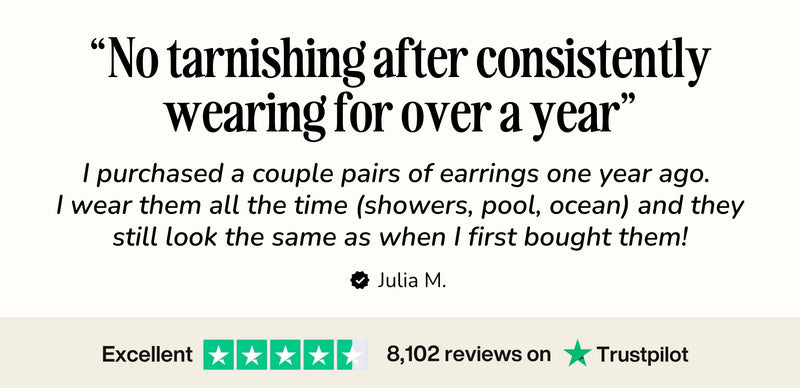




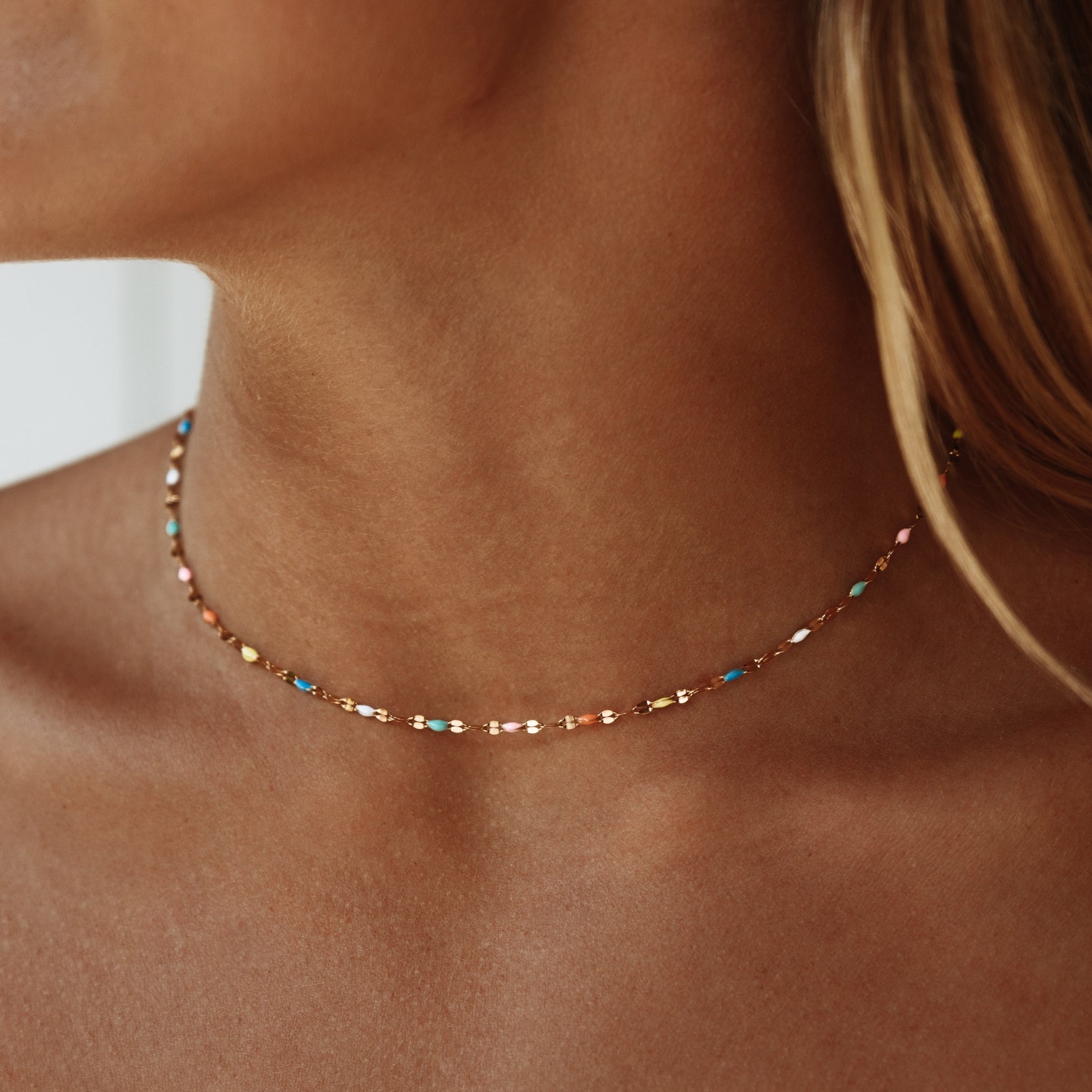
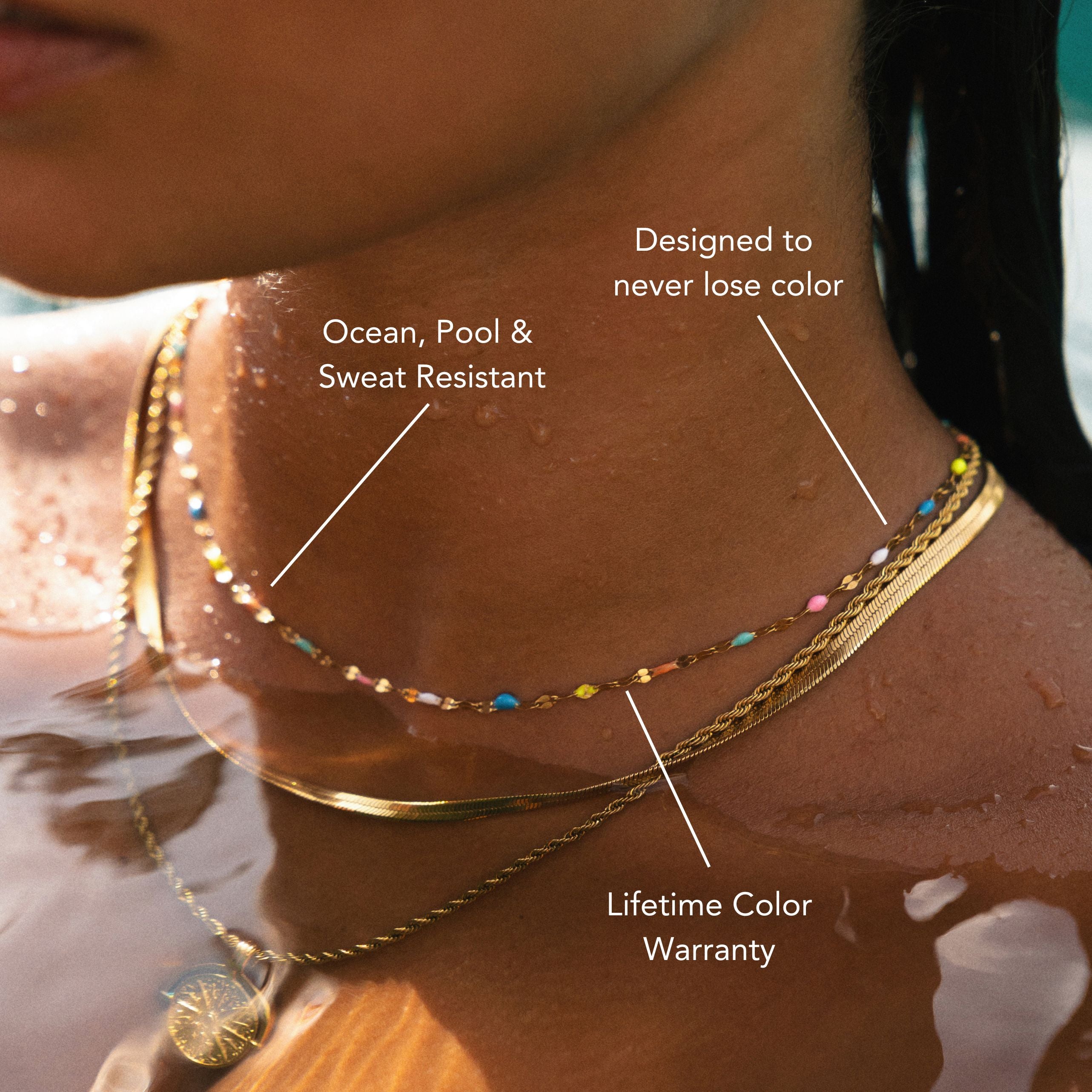
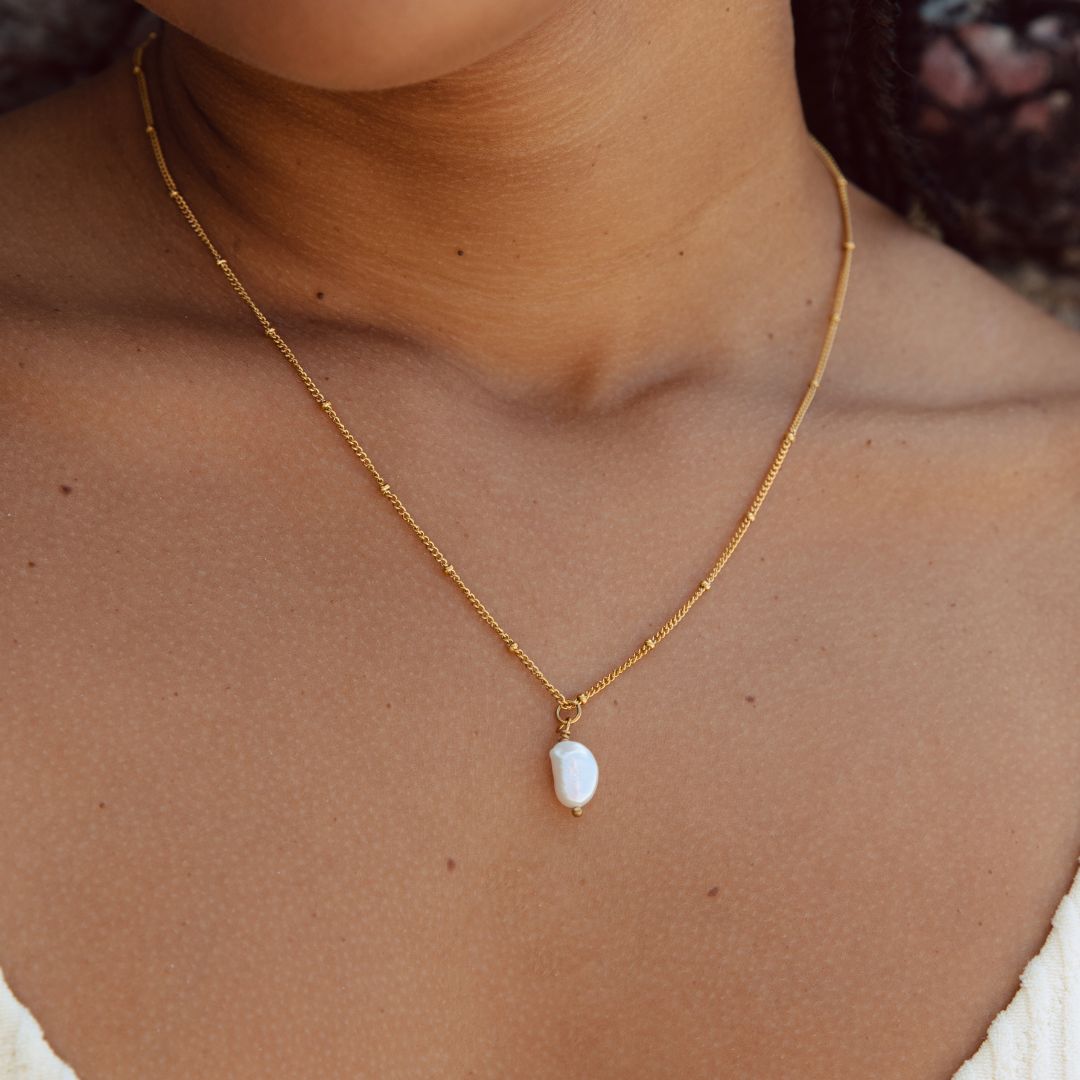
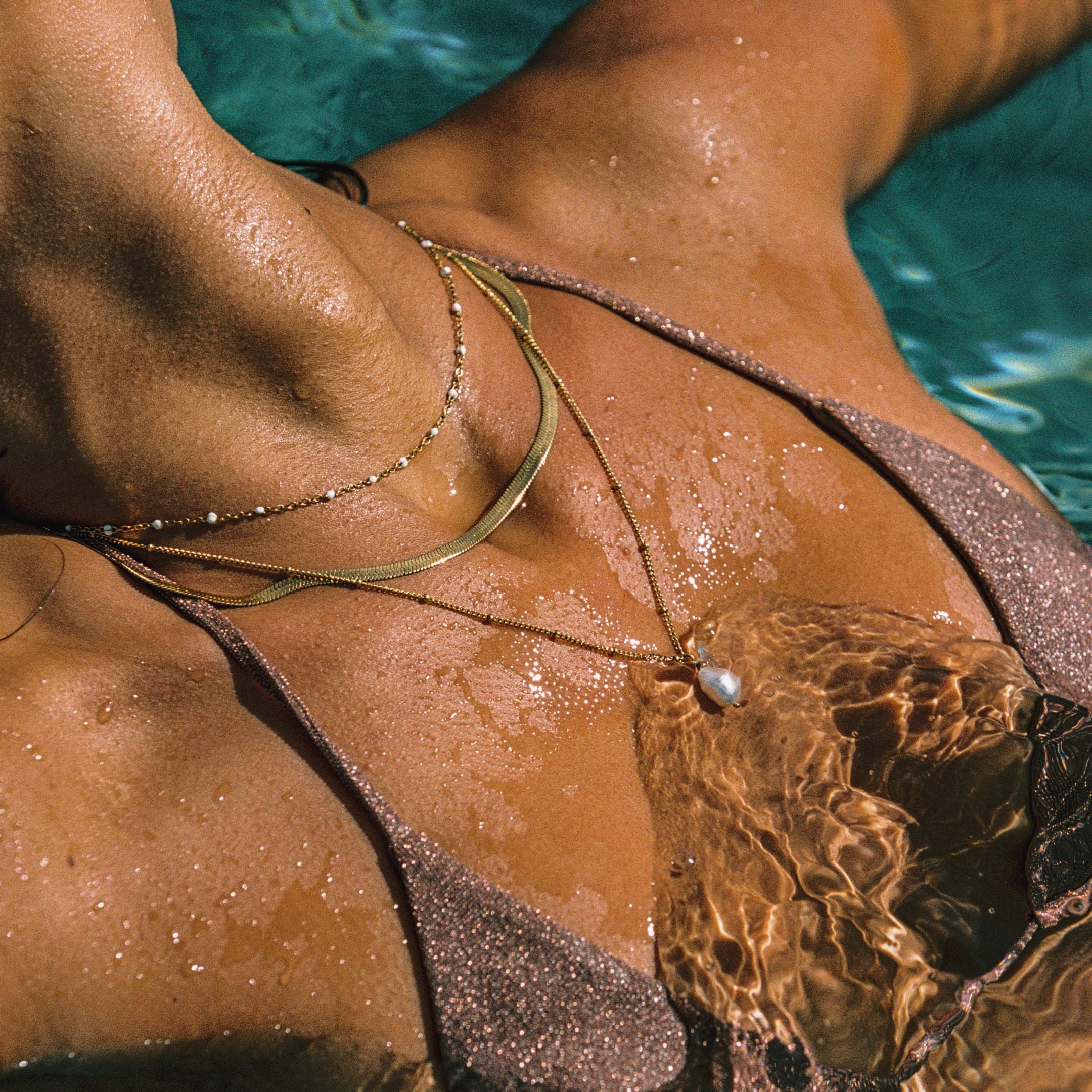
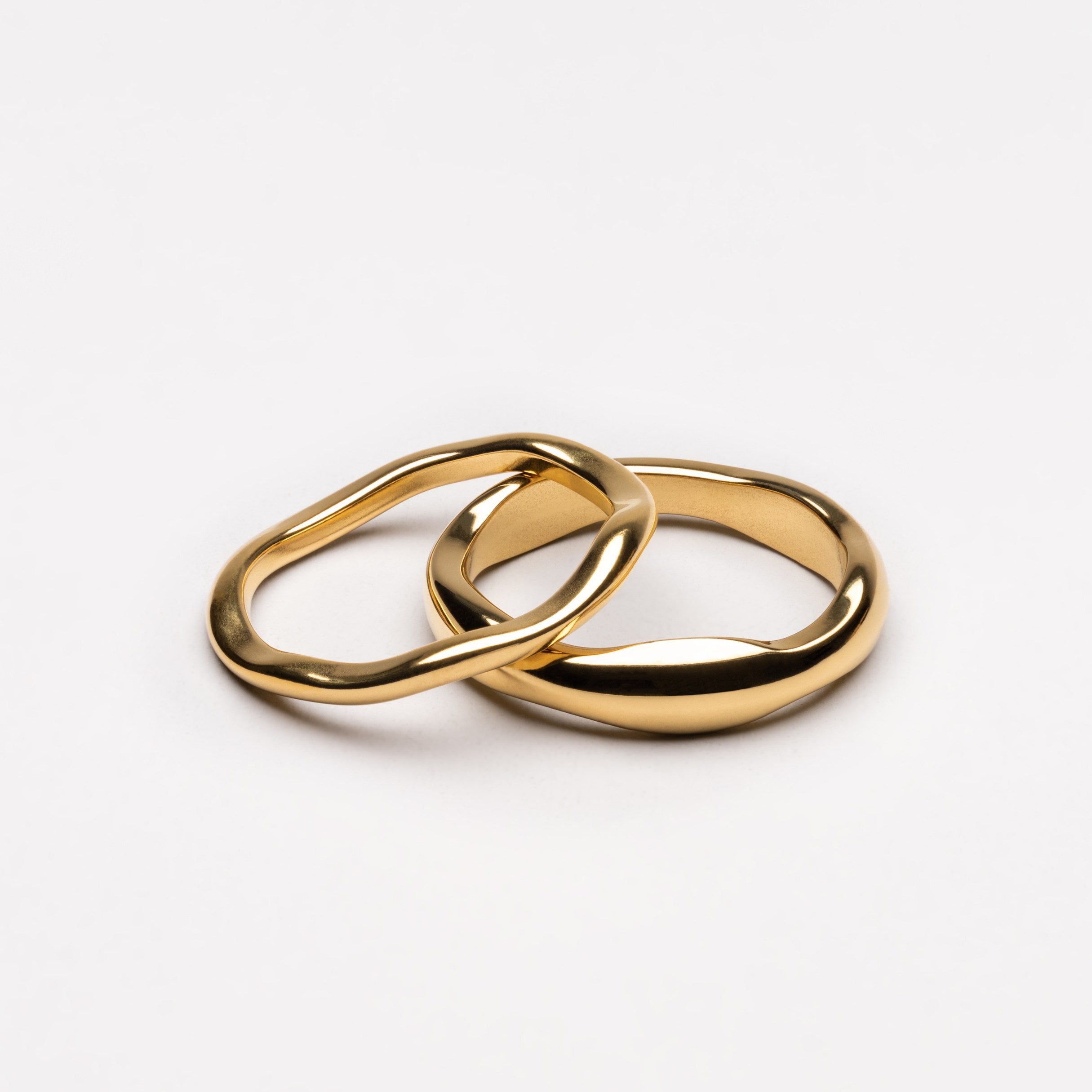
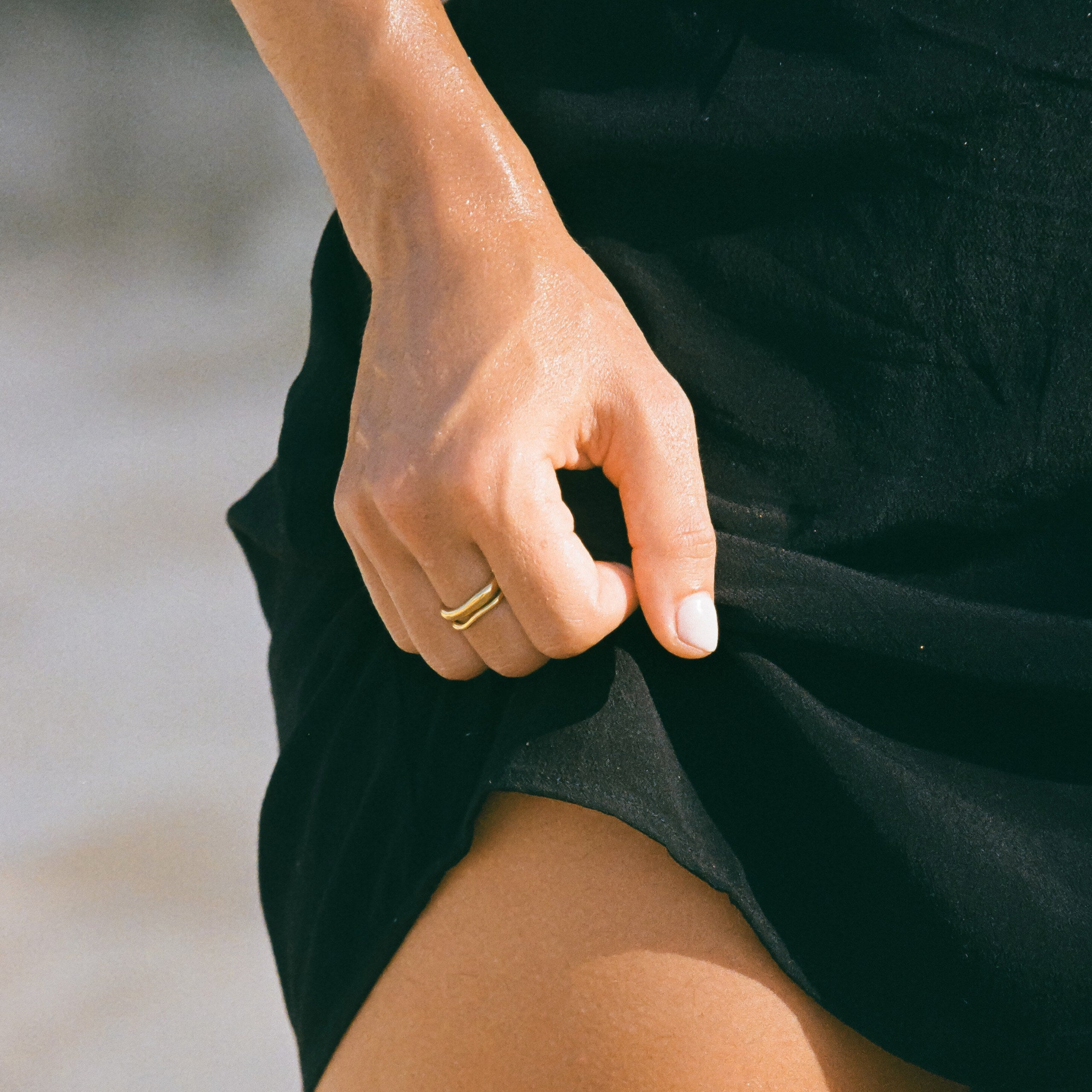
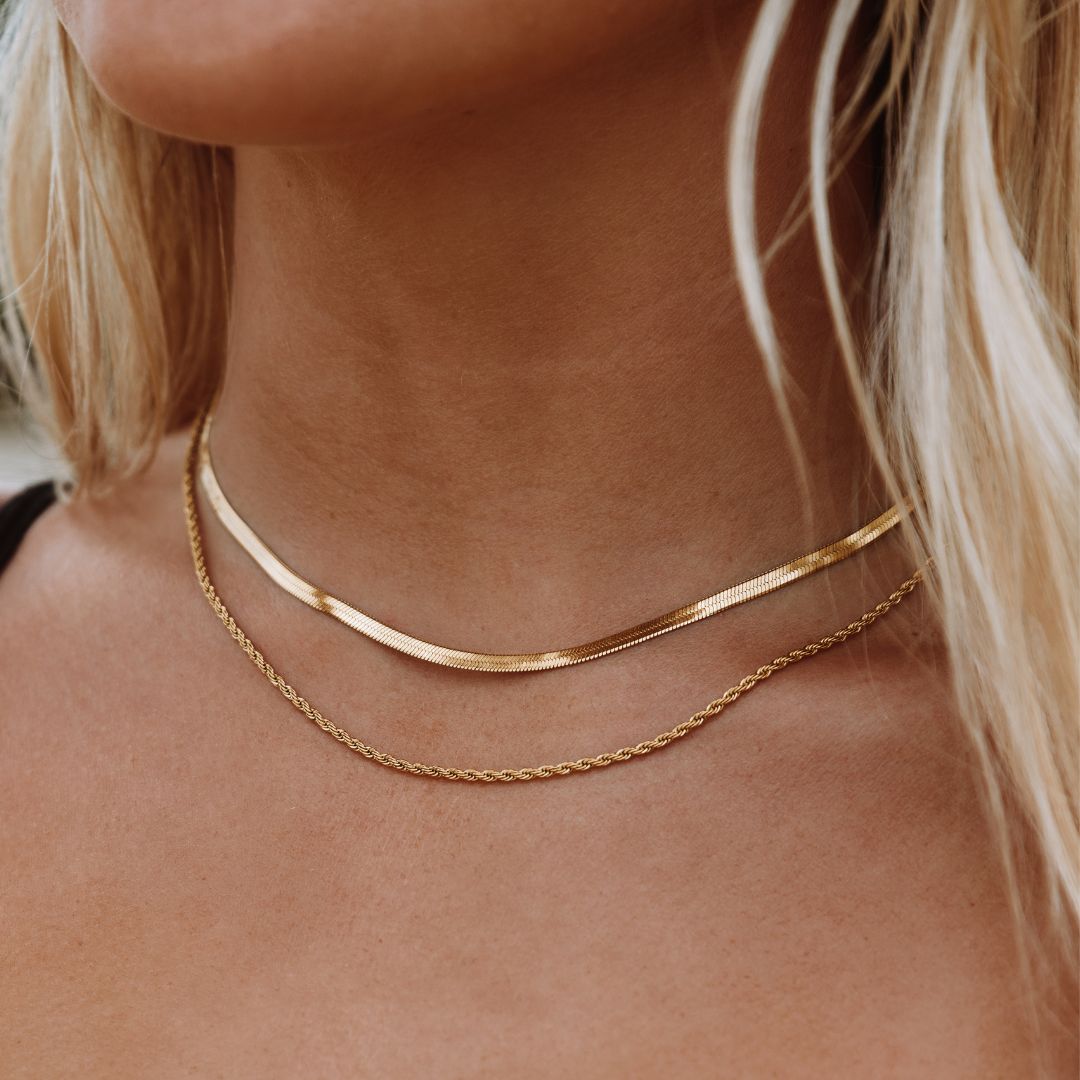
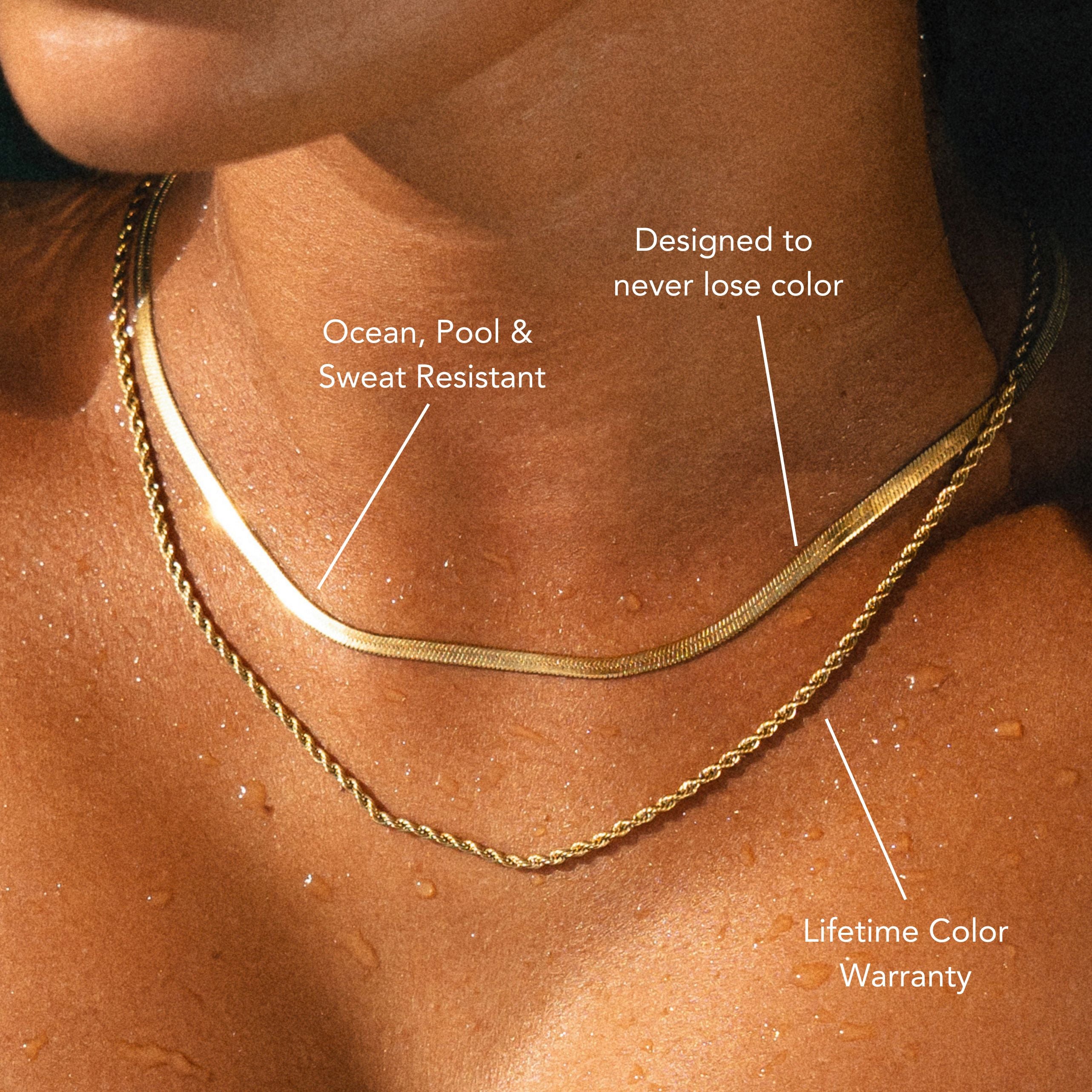
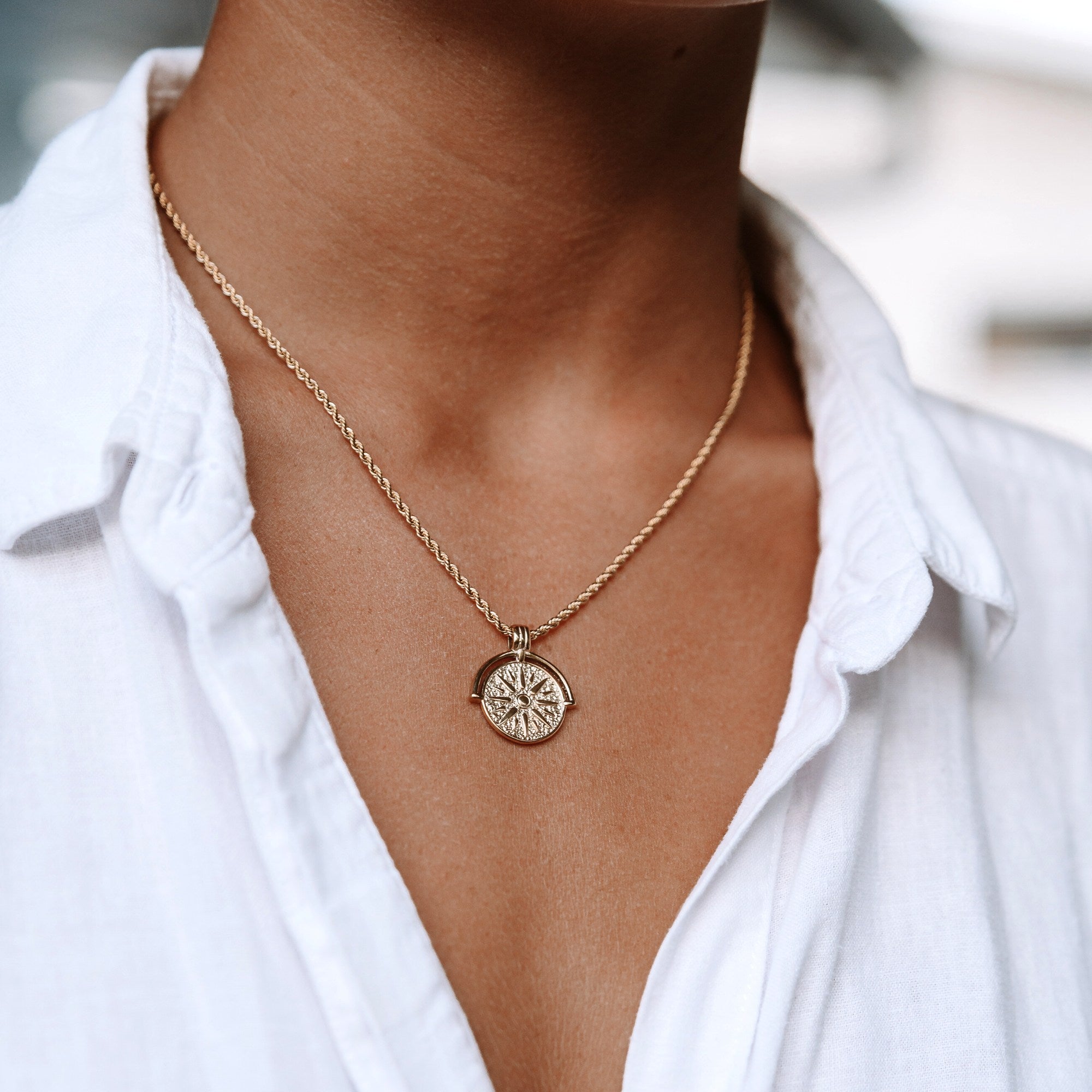
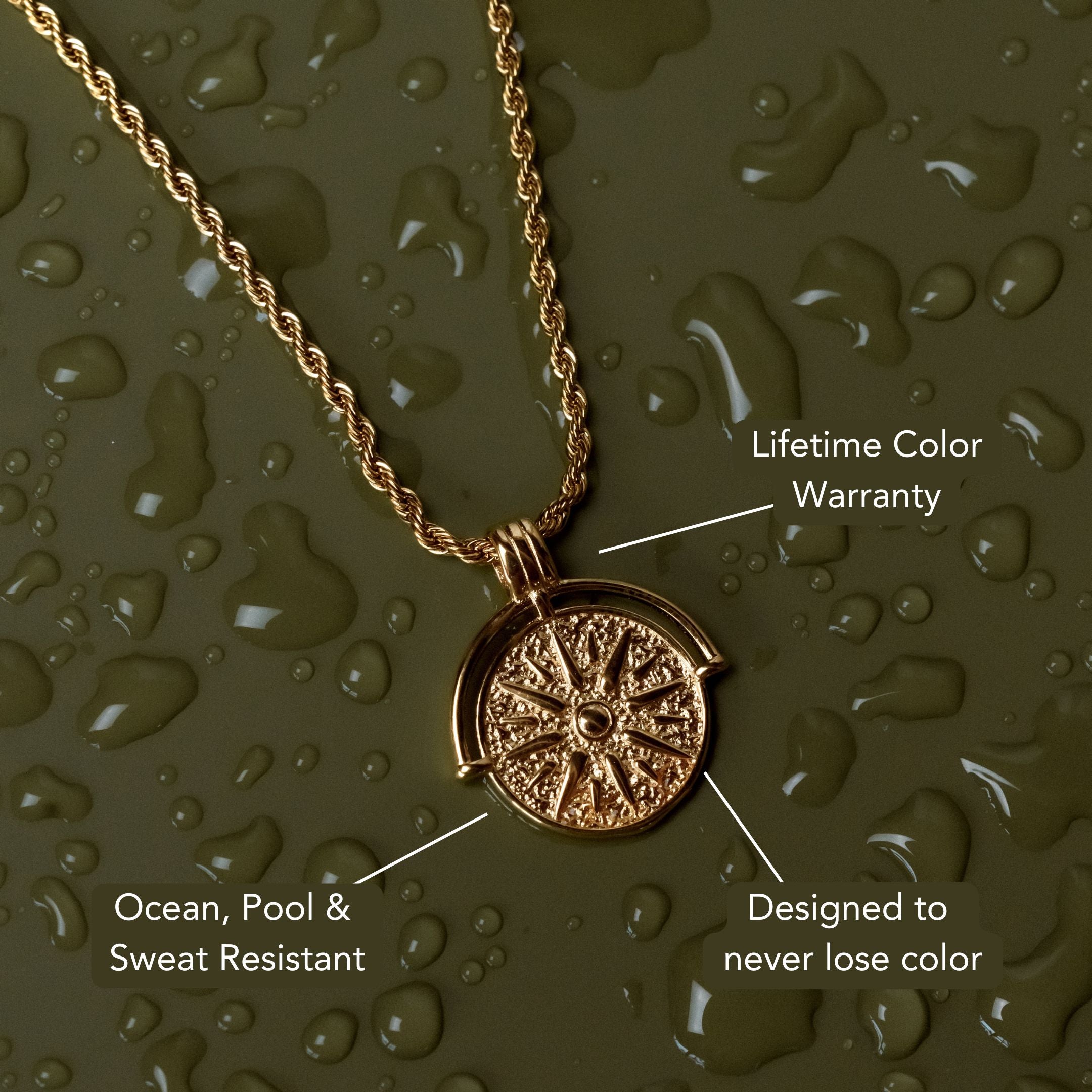
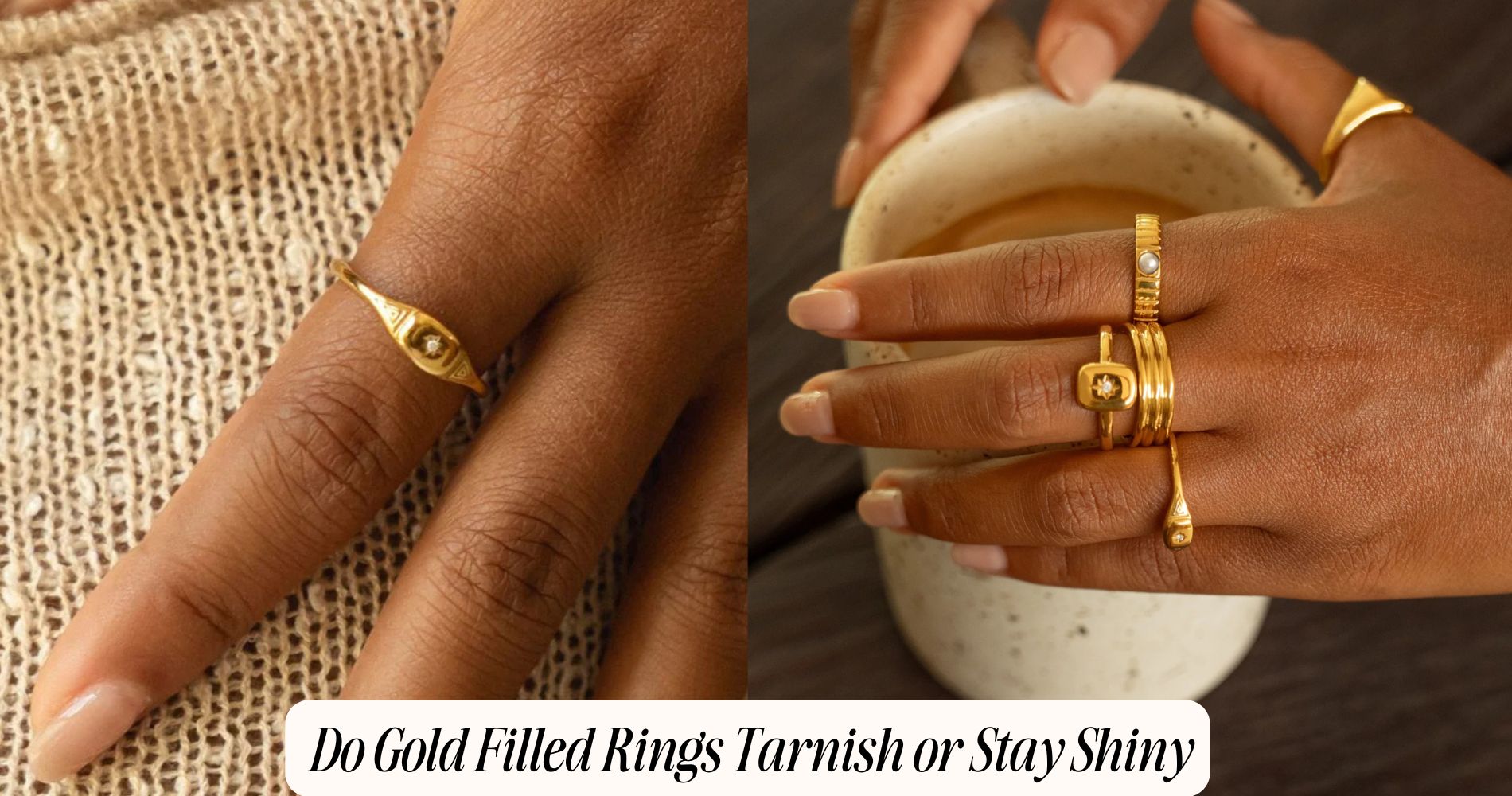
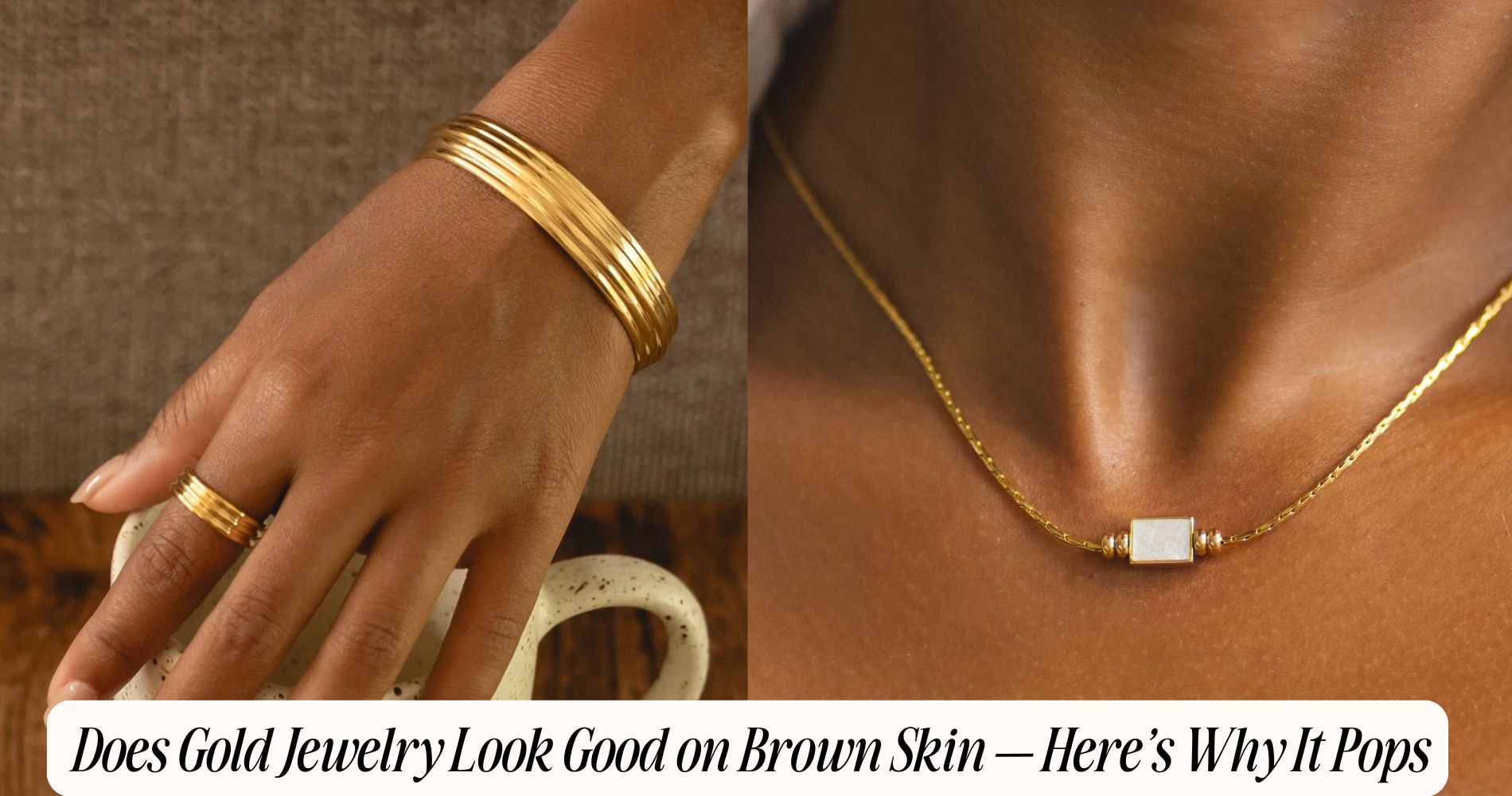




Leave a comment
This site is protected by hCaptcha and the hCaptcha Privacy Policy and Terms of Service apply.